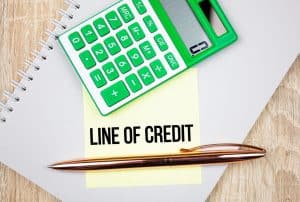
Personal lines of credit are a versatile financial tool that provides borrowers with flexible access to funds. However, many misconceptions surround them despite their benefits, leading to confusion and misuse.
Understanding the truth behind these myths is crucial for making informed financial decisions. Let’s address and debunk common misconceptions about personal lines of credit to help you better understand how they work and how to use them effectively.
Personal Lines of Credit Are the Same as Credit Cards
A common myth is that personal lines of credit are identical to credit cards. While both offer revolving credit, there are significant differences between them.
A personal line of credit provides a pre-approved limit that you can borrow from, repay, and borrow again, similar to a credit card. However, lines of credit often come with lower interest rates than credit cards. Additionally, how you access funds can vary: personal lines of credit might offer checks or direct transfers, while credit cards are used for purchases directly.
Credit cards typically have higher interest rates and fees associated with their use, which can make them a costlier option for ongoing borrowing. On the other hand, personal lines of credit are usually more flexible and can be a more cost-effective choice for larger, long-term borrowing needs. Understanding these distinctions is essential to using each product appropriately based on your financial needs.
Personal Lines of Credit Are Only for People with Excellent Credit
Another common misconception is that personal lines of credit are reserved for individuals with excellent credit scores. While having a good credit score can improve your chances of being approved and receiving favorable terms, it is not the sole factor lenders consider when determining eligibility. When determining eligibility, lenders also evaluate your income, employment stability, and overall financial health.
People with fair or average credit may still qualify for a personal line of credit, though they might face higher interest rates or lower credit limits. It’s worth noting that lenders often provide options for those with less-than-perfect credit, and improving your credit score over time can help you secure better terms. By understanding that personal lines of credit are accessible to a broader range of borrowers, you can explore this financial tool even if your credit history isn’t flawless.
Personal Lines of Credit Always Have High Fees and Costs
A common myth is that personal lines of credit come with exorbitant fees and costs. While it’s true that some lines of credit can have fees, such as annual fees or draw fees, many offer competitive terms and low-cost borrowing options. The cost associated with a personal line of credit depends on various factors, including the lender, your creditworthiness, and the terms of the line of credit.
A key benefit of applying for a line of credit through a reputable platform like CreditFresh is that you only have to pay charges on what you borrow. Once approved, you can request a withdrawal online anytime if you have available credit and your account is in good standing. Being cautious about how much you’re using and how frequently you’re paying off the debt will play a role in the cost of borrowing. Consistently making timely payments can lower your credit costs and raise your credit limit.
It is also essential to compare different lenders and their offerings to find a personal line of credit that meets your needs at a reasonable cost. Carefully review the terms and conditions, including interest rates, fees, and potential penalties for late payments or exceeding your credit limit.
Personal Lines of Credit Are a Form of Long-Term Debt
Some assume that using a personal line of credit will inevitably result in long-term debt. While it’s true that personal lines of credit are revolving credit products, which means you can carry a balance from month to month, they are not inherently a form of long-term debt. The key to avoiding long-term debt is managing your line of credit responsibly.
You can avoid accumulating excessive debt by making timely payments and only borrowing what you need. Personal lines of credit are designed to be flexible, allowing you to repay the borrowed amount and access funds again as required. The responsibility lies in how you use and manage this credit. With careful planning and disciplined borrowing habits, you can utilize a personal line of credit without falling into long-term debt.
You Can’t Negotiate Terms on a Personal Line of Credit
Many people believe that a personal line of credit terms are fixed and non-negotiable. There may be room for negotiation, especially if you have a strong credit profile or are a valued customer with the lender. Negotiating terms such as interest rates, fees, or credit limits can be possible and may result in more favorable conditions.
It is worth discussing your options with lenders and asking about potential adjustments to your line of credit terms. Proactively seeking better terms can lead to a more cost-effective and manageable borrowing experience. Understanding that negotiation is a possibility empowers you to seek the best terms for your personal line of credit.
Personal Lines of Credit Require Collateral
A common misconception about personal lines of credit is that they always require collateral, making them a form of secured debt. In reality, many personal lines of credit are unsecured, meaning they do not require you to pledge assets as security for the loan. Unsecured lines of credit are based primarily on your creditworthiness, income, and financial stability rather than physical collateral.
On the other hand, secured lines of credit may require collateral such as savings accounts, certificates of deposit, or other assets to secure the borrowed amount. These types of credit often come with lower interest rates because the lender has a reduced risk due to the collateral. However, unsecured personal lines of credit are more common and benefit from not putting your assets at risk. Understanding whether a line of credit is secured or unsecured is crucial in evaluating your borrowing options.
If you prefer not to put your assets on the line, exploring unsecured personal lines of credit can be a viable and less risky option. Be sure to clarify this aspect with lenders when considering your options so you can choose the type of credit that aligns with your financial comfort and goals.
Personal Lines of Credit Are a Dangerous Financial Tool
Finally, some view personal lines of credit as inherently dangerous financial tools. While any form of credit carries some risk, personal lines of credit are not inherently more dangerous than other credit products. The risks associated with personal lines of credit primarily stem from misuse or mismanagement rather than the product itself.
You can mitigate potential risks by using a personal line of credit responsibly, such as borrowing only what you can afford to repay and making timely payments. Educating yourself about the terms and conditions of your line of credit and maintaining disciplined financial habits can help you use this tool effectively and avoid financial pitfalls.
Conclusion
Personal lines of credit offer valuable flexibility and access to funds for various needs. By debunking these common misconceptions, we hope to provide a clearer understanding of how personal lines of credit work and how they can be used responsibly. Whether you’re considering a personal line of credit for emergencies, planned expenses, or debt management, being informed and understanding the true nature of this financial tool will help you make better decisions and manage your finances more effectively.








